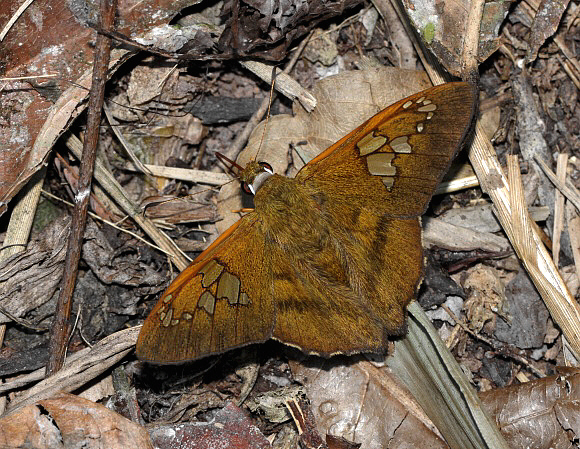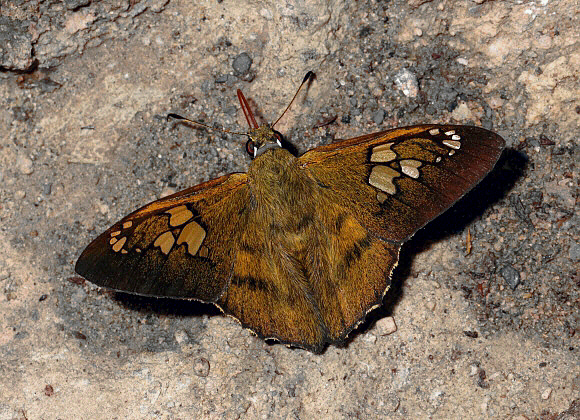
Introduction
The subfamily Pyrginae are characterised by their habit of basking with wings outspread, compared to the half-open position favoured by the Hesperiinae.
The tribe Eudamini includes 44 genera in the Americas, amongst which are the Long-tailed Skippers Urbanus, Chioides and Aguna; and other familiar genera including Phocides, Autochton, Astraptes, Nascus and Calaenorrhinus.
The genus Nascus comprises of 5 large crepuscular skippers – phocus, broteas, phintias, prax and solon, all of which are confined to the neotropical region. All have dark reddish eyes and brownish-olive wings, with a series of irregularly shaped transparent “windows” on the forewings. In females of all species these windows form a broad band running diagonally across the forewings, whereas in males they are clustered in a triangular configuration.
In common with many other members of the Pyrginae, the leading edge ( costa ) of the forewings of Nascus males has a prominent fold within which are concealed hundreds of androconial scales. These disseminate pheromones which are used to entice females to copulate.
Nascus phocus is distributed from Mexico to Paraguay and Argentina.

Habitats
This species is found in tropical and subtropical forest at altitudes between about 200-1200m.
Lifecycle
To be completed.
Adult behaviour
In daylight hours Nascus adults habitually hide under leaves, with their wings held fully outspread. Although theoretically at rest, they remain extremely alert at all times, and if disturbed by a human intruder they suddenly dart out, circling and zig-zagging about at incredible speed. Then, after no more than 3 or 4 seconds have elapsed they dive back under another nearby leaf, flip upside down, and turn to face outwards, staring in the direction of the intruder.
As darkness falls they leave their hideaways and suddenly become extraordinarily active, rocketing back and forth along forest trails, usually just above ground level. The flight is so rapid and erratic that it is impossible to follow with the eye. Periodically a male will home in on a patch of urine-tainted soil or peccary dung, pushing aside competing species including Porphyrogenes, Bungalotis, Salatis etc, to gain access to the unsavoury meal.

